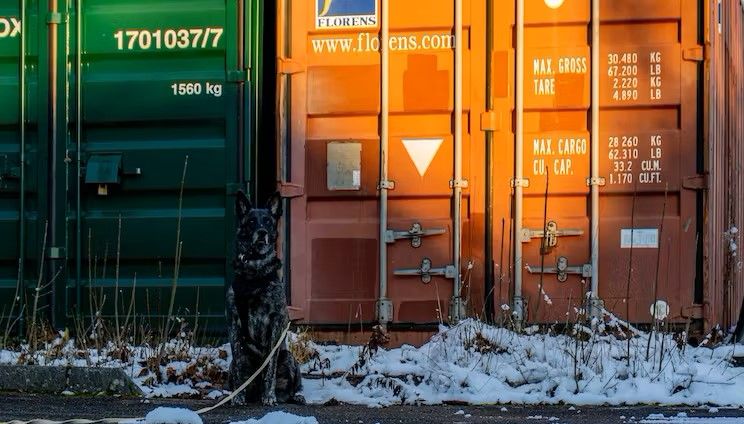Limited Time Offer: Get CAD 100 Off Per Container
Winter is here, the days are getting shorter and darker which means it’s time to get your 20ft, 40ft, or 40ft HC container ready for the winter days ahead.
Corten steel and wood shipping containers are designed to keep everything inside safe from the environment such as sun, snow, wind, and even rodents. While able to stay wind & watertight, they can be affected from weather extremes. We recently sat down with our Container Quality Expert and Supply Chain Manager, Nikhil Abraham, to learn about how to prepare your container for winter and the changes of the season.
“While durable and able to withstand the harsh tenure at sea, containers can also benefit from a little TLC this time of year. If you live in an area that customarily gets substantial amounts of snow, make sure to inspect the container for holes along the sides and roof of the container. Keep joints lubricated and to remove extra surface dirt with a mixture of water and Windex.” Nikhil added.
“Preserving container life is one of the primary focuses of Eveon. While no longer deemed seaworthy, shipping containers are still an effective sustainable building and storage solution once retired from sea. Regular checkups and care can keep them protecting your items for years to come!”
Other recommendations and tips from our container expert...
Condensation is often one of the first things people experience inside a container. If you live in a city with significant seasonal temperature changes or winter temperatures that drop below freezing, condensation can be an issue. If the sun is shining and the outside of the container warms up, the steel no longer matches the temperature inside the container, condensation can build up. If there is a temperature change between the air inside and outside the container, water droplets will appear. Instead of condensation building up on the outside of the container like a water glass, it will appear on the inside. Often referred to as “container rain” this occurs when water droplets appear on the container walls and ceiling, drip onto the floor. This rain can lead to issues in the future, such as mold, mildew, and rust.
Condensation is an issue in wintertime, but it can happen anytime of the year and in other climates as well—especially humid ones. So no matter where you live, if condensation is an issue, you could install vents. You can install it on the end walls, container doors, and sidewalls. Best is to install two vents diagonally, so air can match the outside temperature. 90% Of the time this will resolve your issue.
Container frozen to the ground: When containers are positioned directly on the ground, without blocks underneath the corner posts, it might end up sinking into the ground. Once it sinks into the ground and the ground freezes, your container is now frozen to the ground, and it is difficult to winch it out. So, if you plan to move your container during winter at all, ensure you have placed blocks beneath the corner posts so it's easier to move when you need to.
Roof damage: Another way to prepare for winter is to check your container for damage, such as rust or pinholes. If you live in an area that gets snow accumulation during the winter, it is important to inspect the container for structure damage. So, before winter hits, do a walk around of your container—especially the roof— and check for damages. See if there are any areas that hold water or places that are starting to cave in. Push out any dents holding water and silicone or caulk pinholes where the sun is creeping in.
Maintain moving parts: Keep an eye on the doors’ joints. By oiling and opening them now and then, you prevent the joint from rusting and fusing together. Just like us, the container doors can get a little stiff during the winter. “Use WD40 on doors and joints to keep them lubricated in the harsh winter months.” Shine noted.
Check that the container is sealed: Look for any cracks or gaps in the walls; anything that affects the humidity and airflow can lead to sudden environmental changes within your shipping container.
Following these simple steps can help ensure the life of your Eveon container and help protect your equipment and cargo for years to come! If you have any specific questions about preparing your container for winter, do not hesitate to email Nikhil Abraham at nikhil.abrahams@eveoncontainers.com.

